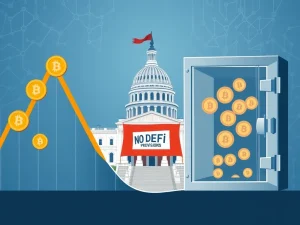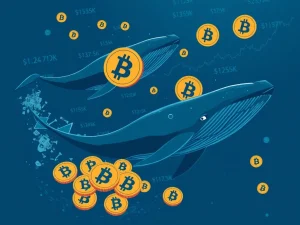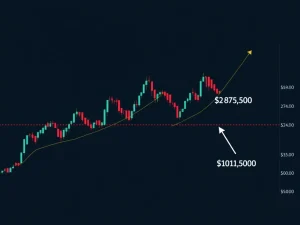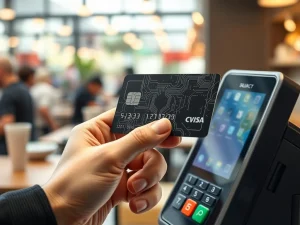Revolutionize Your Web3 Mobile Development: Build a Solana DApp in Just 15 Minutes
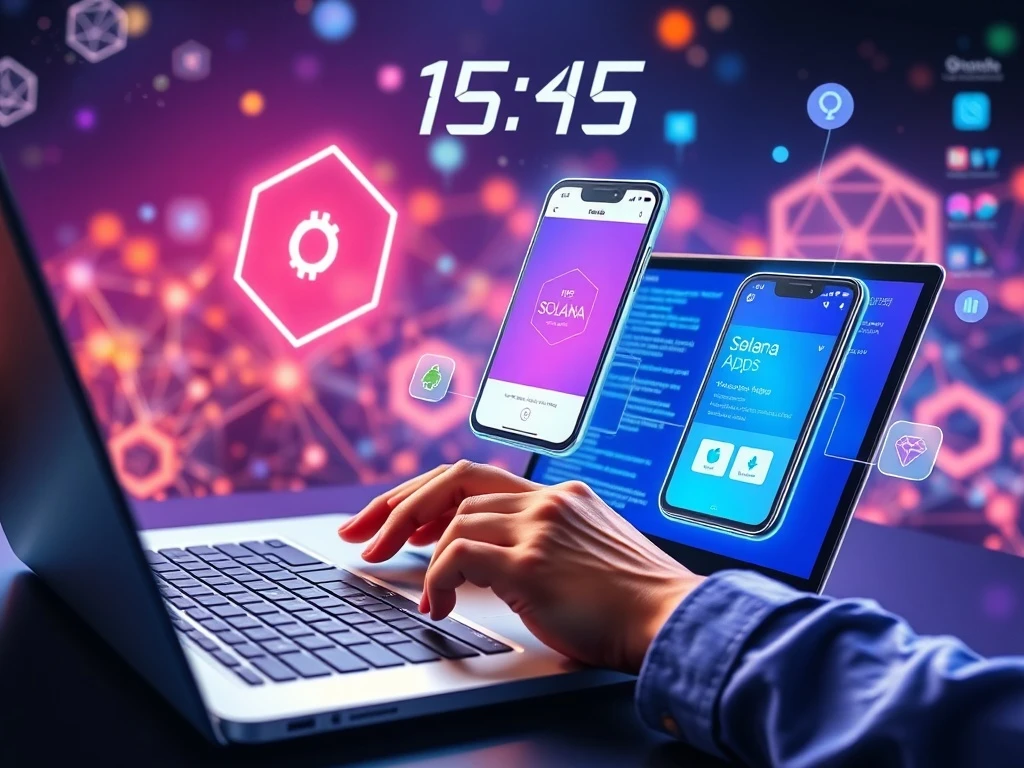
Are you a crypto enthusiast or developer tired of the complexities and delays in building decentralized applications? Imagine creating a fully functional mobile DApp for iOS and Android, complete with wallet integration, token actions, and NFTs, in less time than it takes to brew your morning coffee. This isn’t a futuristic dream; it’s the new reality for Solana DApp development, especially for those venturing into Web3 Mobile Development. The days of wrestling with intricate back-end services and cross-platform nightmares are over. Thanks to groundbreaking new toolkits, building a powerful Mobile DApp is now remarkably straightforward and lightning-fast, with absolutely no back-end code required.
Why Solana Mobile Apps are Redefining Web3 Mobile Development
The landscape of decentralized application development has undergone a dramatic transformation. What once required extensive back-end infrastructure, complex wallet integrations, and platform-specific coding, has been streamlined into an incredibly efficient process. In 2025, the Solana ecosystem has emerged as a powerhouse for consumer and DeFi applications, driven by a massive surge in mobile-first usage. This shift demands developer toolkits that prioritize ease, speed, and seamless user experience. Solana’s innovative mobile tooling is specifically engineered to integrate flawlessly with native mobile platforms, eliminating the need to bootstrap custom infrastructure. Developers can now pour their energy into crafting exceptional features and user experiences, accelerating their time to market.
The synergy between the Solana Mobile App Kit and React Native Solana integration offers a suite of unparalleled advantages:
- Prebuilt Wallet Adapters and Deep Link Support: Connect to popular wallets like Phantom and Backpack with minimal effort, ensuring secure and smooth user authentication.
- Mobile-Ready Components: Access pre-designed components for displaying NFTs, managing balances, and handling tokens, speeding up UI development.
- Single Codebase for iOS and Android: Build once and deploy everywhere, drastically reducing development time and maintenance overhead.
Whether your vision is an innovative NFT marketplace, a comprehensive DeFi portfolio tracker, or even a unique meme token launcher, Solana’s mobile stack provides the speed and flexibility needed to bring your ideas to life.
The Game-Changing Stack for Effortless No-Backend DApp Creation
The secret to this rapid development lies in a powerful, open-source tool stack that removes traditional barriers. Developers no longer need to concern themselves with server infrastructure, complex back-end databases, or cumbersome user authentication flows. The wallet handles it all, ensuring security and simplicity.
Essential Tools for Building Your Solana Mobile DApp:
- React Native: The cornerstone for building cross-platform mobile applications from a single JavaScript codebase.
- Solana Mobile App Kit: A specialized mobile SDK offering Solana-native components and utilities.
- Wallet Adapter (React Native): Provides plug-and-play connectivity to various Solana wallets, facilitating secure transaction signing.
- SEND Kit: A comprehensive ecosystem offering app templates for common use cases like NFTs, tokens, and DeFi, accelerating development.
- @solana/web3.js: The foundational library for interacting with Solana RPC endpoints and managing onchain transactions.
- Phantom/Backpack Wallets: Leading mobile wallets that support deep link integration, essential for a seamless user experience.
Did you know? The Solana App Kit, a core component of the Send ecosystem, offers one-command mobile app scaffolding. This includes deep wallet integration, token swaps, NFT minting, AI components, and over 18 protocol integrations, all ready to go out of the box. This robust toolkit is key to achieving a truly No-Backend DApp.
Step-by-Step: Building Your First Solana DApp in Minutes
The process of creating a fully functional Solana DApp is surprisingly simple. Follow these steps to get your mobile application up and running:
Step 1: Set Up Your Mobile App Project
Begin by initializing a new React Native application. The fastest way to get started is by using Solana AppKit’s CLI tool, which scaffolds a complete mobile DApp project with a single command:
npx start-solana-app
This command automatically configures your cross-platform iOS and Android app with pre-integrated Solana wallet support, RPC tools, and essential UI components.
Step 2: Integrate Wallet Login Using Deep Links
Forget about building traditional login systems. Instead, leverage deep links to integrate with popular mobile wallets like Phantom and Backpack. The Wallet Adapter for React Native makes this process seamless, allowing users to connect their wallets and securely sign transactions without any back-end involvement. Beyond deep linking, Solana also offers a native Mobile Wallet Adapter (MWA) protocol with dedicated React Native libraries (@solana-mobile/mobile-wallet-adapter-protocol-web3js) for direct, secure wallet communication.
Step 3: Fetch Balances, NFTs, and Tokens
Once a user’s wallet is connected, you can use the @solana/web3.js library to query their account information directly. This includes their SOL balance, SPL tokens, and NFTs. All these operations occur client-side, by connecting directly to a Solana RPC endpoint, reinforcing the No-Backend DApp architecture.
Step 4: Trigger Onchain Actions Like Swaps or Mints
The Solana AppKit provides built-in support for leading DeFi and NFT protocols such as Jupiter, Metaplex, and Pump.fun. This allows you to easily enable users to swap tokens, mint NFTs, or even launch memecoins through pre-integrated modules that submit transactions via the wallet adapter. This capability is crucial for any interactive Mobile DApp.
Step 5: Deploy Your App to iOS and Android
Utilize React Native’s robust toolchain (e.g., `npx react-native run-ios` or `run-android`) to build and test your application. The Solana Ecosystem Native Development (SEND) Kit further enhances this process by offering modular app templates, designed for rapid customization and deployment. These templates empower developers to focus primarily on design and user experience, while the underlying blockchain logic is expertly handled.
Unlocking the Power of No-Backend Mobile DApps
Building decentralized applications without a back end is more than just a time-saver; it signifies a monumental shift in how Web3 applications are conceptualized and constructed. The traditional approach often relied on centralized services for critical functions like authentication, token metadata, and session management. Thanks to advanced wallet adapters and direct Solana RPC interactions, much of this centralized dependency is no longer necessary. This modern architecture offers significant advantages:
Modern Web3 Architecture vs. Traditional Approach:
| Feature | Traditional Web3 App (with Backend) | Modern No-Backend DApp (Solana) |
|---|---|---|
| Authentication | Centralized servers, user databases | Wallet-based (Phantom, Backpack via deep links) |
| Data Storage | Centralized databases (SQL, NoSQL) | Onchain (Solana RPC, account data) |
| Session Management | Server-side sessions, cookies | Wallet-managed, token-based (onchain) |
| Token Metadata | Fetched from centralized APIs or databases | Directly from Solana RPC or Metaplex |
| Transaction Logic | Often routed through backend services | Directly submitted via wallet adapter to RPC |
| Deployment | Frontend + Backend servers | Frontend only (static hosting, decentralized storage) |
Benefits of this Architectural Shift:
- Faster Shipping Cycles: Without the need to build, deploy, or maintain a back end, development teams can launch prototypes or even production-ready applications in days, not months.
- Lower Maintenance Overhead: The absence of servers means no infrastructure to patch, monitor, or scale, significantly reducing operational costs and complexity.
- Improved User Experience by Design: Wallet login seamlessly replaces clunky sign-up flows, allowing users to be onboarded with a single tap, enhancing the overall Mobile DApp experience.
- Enhanced Security: The risk of back-end breaches is eliminated. Wallets like Phantom and Backpack ensure that private keys and sensitive session data never touch centralized servers, bolstering security for your Solana DApp.
- True Decentralization: Every interaction, from minting an NFT to swapping tokens or reading wallet balances, occurs fully onchain, without any intermediaries. This embodies the core principle of Web3.
This mobile-native, No-Backend DApp approach is particularly powerful for applications where rapid finality, low transaction fees, and a truly decentralized architecture are paramount requirements. By building for mobile app users, developers can potentially tap into a massive audience of over 6 billion mobile users worldwide, spanning both iOS and Android, all without the burden of separate codebases or extensive back-end infrastructure.
Scaling Your Solana Mobile App for Broader Adoption
Once your Minimum Viable Product (MVP) is successfully launched, the journey to scaling your Mobile DApp becomes the next exciting phase. The flexible architecture allows for easy expansion and integration of advanced features:
- Integrate Solana Pay: Enable seamless in-person or QR-based payments for your users.
- Add Push Notifications: Keep users informed about transaction events and other important updates.
- Support Biometric Security: Enhance security and convenience with Face ID or fingerprint authentication.
- Utilize Onchain Analytics: Implement open analytics tools to track user engagement and onchain activity transparently.
- Expand Wallet Support: Leverage the Wallet Adapter’s modular design to add compatibility for additional wallets as needed.
- Enhance User Interface: Incorporate features like dark mode, offline viewing capabilities, or multilingual support using readily available React Native Solana libraries.
From the exciting world of memecoins to innovative NFT minting platforms and sophisticated DeFi tools, mobile-first blockchain experiences are rapidly becoming the industry standard. If you are a developer or a startup founder with an eye on the future of Web3, now is the opportune moment to embrace mobile development. The tools and ecosystem are mature, robust, and designed for unparalleled speed and efficiency, truly revolutionizing Web3 Mobile Development.
This article does not contain investment advice or recommendations. Every investment and trading move involves risk, and readers should conduct their own research when making a decision.






